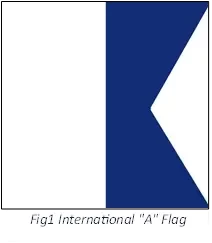You've carefully outfitted your boat according to the Coast Guard checklist of essential items to pass an inspection – so you're all set, or are you? If you're headed for the warm Florida winters, there may be additional requirements from the Florida Fish and Wildlife Conservation Commission (FWC).
The starting point is always the Coast Guard requirements as listed in A Boater's Guide to the Federal Requirements for Recreational Boats. I won't reiterate everything in the link, but instead highlight only the additional requirements you may need to pass a FWC inspection with a typical ICW cruising vessel.
Personal Flotation Devices (PFDs)
The only difference is when the boat is underway. The Coast Guard requires all on board under the age of 13 to wear a PFD except when below deck or within an enclosed area, but Florida requires those under the age of 6 to wear a PFD for boats under 26 feet at all times, with no exceptions for being below deck or in an enclosed area. For those between 6 and 13 years of age, the requirement reverts to the Coast Guard list. So, if you're inspected by the FWC in a boat less than 26 feet, be sure all onboard of age 6 or less are wearing life jackets, regardless of where in the boat they are.
Fire Extinguishers
FWC follows the USCG requirements, but clarifies that open boats under 26 feet powered solely by outboard motors do not require a fire extinguisher if constructed in a manner that prevents gas fumes from accumulating. If the boat has a built-in fuel tank, an inboard engine, compartments where portable fuel tanks may be stored, or open areas between the hull and deck where flammable or explosive gases could accumulate, a fire extinguisher is required. Non-motorized boats are exempt from the fire extinguisher requirements.
Visual Distress Signals (VDS)
Vessels operating on U.S. coastal waters, the Great Lakes, and territorial seas, as well as those waters connected directly, up to a point where the waterway is less than two nautical miles wide, must be equipped with U.S. Coast Guard-approved visual distress signals (VDS) as illustrated below.

The Coast Guard allows the following boats to carry only nighttime signals (day signals not required)
- Recreational boats less than 16 feet in length
- Boats participating in organized events, such as races, regattas, or marine parades.
- Open sailboats less than 26 feet in length that are not equipped with propulsion machinery.
- Manually propelled boats
The FWC requires all boats longer than 16 feet to carry both daytime and nighttime signals (without the exceptions in the Coast Guard list). The FWC requires only nighttime signals for boats less than 16 feet in length, as does the USCG.
Navigation Lights
No differences between Coast Guard and FWC requirements are listed. However, there was controversy in Marathon, Florida, several years ago, where FWC had a training base and cadets were ticketing dinghies for not having a light at night even though they were tied to the boat with a line. After several vocal meetings between boaters on moorings and the FWC, an informal compromise was reached: dinghies did not need a light at night if they were attached to the boat with a line less than 10 feet. This variance is not documented in the FWC requirements list.
Emergency Engine Cut-Off Switch (ECOS)
No differences. Remember that all boats less than 26 feet in length must have a kill switch lanyard fitted and attached to the operator when operating on plane or above displacement speed.
Diving Flags
The FWC requires the use of the "Diver Down" flag in Florida waters. It's red with a diagonal white stripe. Boats are required to keep 100 feet away in rivers and channels and 300 ft away in open waters. The Coast Guard rules do not specify an avoidance distance and allow the use of either the international "A" flag or the Diver Down flag.


Vessel Lighting
The FWC follows the Coast Guard requirements as detailed in Power Driven Vessels Underway and in Sailing Vessels Underway and Vessels Under Oars. The links are provided because the requirements are so detailed and vary by vessel size. Two things to remember when cruising the ICW.
- At anchor, display an anchor light. This rule applies in popular anchorage and mooring areas, such as the Marathon and Jensen Beach Mooring Fields, and many others. When in doubt, turn on your anchor light at night.
- When motoring at night to shore for an evening dinner, you must have the red/green sidelights and a sternlight. There have been numerous instances of boaters receiving a ticket when they took a short trip to shore without bothering to set up the required lights on their dinghy. A hotspot area for getting a ticket is in Ft Lauderdale when crossing the ICW channel from an anchorage to get to shore.
Safety Education Requirements
There is no Coast Guard issued national boater license or card. Florida requires those born after January 1, 1988 who operate a vessel with a motor of more than 10 hp to carry a Florida Boating Safety Education ID Card with photo. There are some exceptions described in Florida's Boater's Guide, which has additional details.
For all other cases not covered in this article, follow the Coast Guard Requirements.












